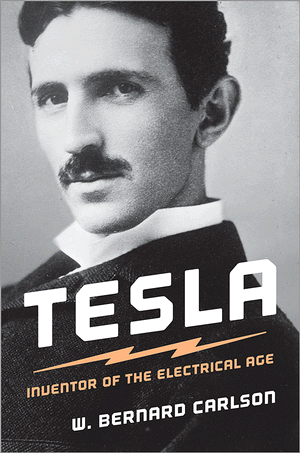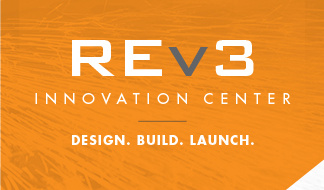 Nikola Tesla was reduced to taking work as a day laborer digging ditches after previously working as an engineer with the Edison Company and then being forced out of a company he started with two other investors. He was down on his luck, unable to find work as an inventor or engineer. He was broke and despondent describing this time as “a year of terrible heartaches and bitter tears.” He lamented that all of his high education in science and mechanics was “a mockery.”
Nikola Tesla was reduced to taking work as a day laborer digging ditches after previously working as an engineer with the Edison Company and then being forced out of a company he started with two other investors. He was down on his luck, unable to find work as an inventor or engineer. He was broke and despondent describing this time as “a year of terrible heartaches and bitter tears.” He lamented that all of his high education in science and mechanics was “a mockery.”
But in the midst of this hardship he did not give up on inventing. He continued his work and filed a patent on a hydromagnetic motor. Opportunity would come through an unexpected place–through a network connection prompted by the mere discussion of his hydromagnetic motor invention on the ditch digging job. This story shows the need for carrying on in the face of adversity.
Nikola Tesla is an inventor best known for his contribution to the design of alternating current (AC). His work on the AC motor and AC power allowed for transmission of power for longer distances. His AC systems provide a foundation for the AC power systems used today. His work on AC electricity brought him recognition and wealth in his 30’s, but in his forties his stature fell somewhat by his actions and efforts related to the wireless transmission of power. Bernard Carlson’s biography, Tesla: Inventor of the Electrical Age, provides a detailed look at Tesla’s life and work.
The success in licensing rights in Tesla’s AC motor and AC power system patents to the Westinghouse Electric Company provides potential lessons for licensing an invention and taking it to market.
 1. Use your Network to Find A Partner
While Tesla was working day labor digging ditches, as explained above, Tesla told the foreman about his invention efforts on the hydromagnetic motor. The foreman then introduced Tesla to Alfred Brown, who was the senior Western Union Manager. Brown knew he needed the business help of Charles Peck, who he knew previously. Brown was technically oriented and Charles Peck was business savvy.
Peck and Brown agreed to cover Tesla’s development and patenting costs. They also provided him with a salary of $250 per month. The three agreed to split the profits in thirds with a third to Peck and Brown, a third to Tesla, and a third reinvested in future developments. Before focusing on AC motors, Peck and Brown first encouraged Tesla to work on a pryomagnetic generator.
Not every inventor needs a financial/business partner but sometimes its helpful. You never know who in your extended network can help. Its not clear that Tesla was asking for help from the foreman. It appears that he was merely talking about his invention. Tesla was able to talk freely about his thermomagnetic motor invention because he had already filed a patent application on it. Sometimes you might want to keep your invention confidential even after filing a patent application for business or competitive reasons (not patent reasons). But in other cases, talking about the invention after filing a patent application in conversations with others can produce unexpected positive connections and results.
2. Know When To Pivot
Tesla’s efforts at making a pyromagnetic generator ran into problems. As Carlson recounts, Tesla was “[d]istressed that he was an able to perfect this invention, [and] Tesla feared that Peck and Brown might abandon him….” But they did not. Peck had confidence in Tesla. Peck encouraged Tesla to focus his work on an electric motor.
Peck likely encourage Tesla to work on electric motors, because he was aware of the market at the time. Carlson writes, “Peck and Brown were probably comfortable with Tesla investigating motors because of the growing discussion in electrical circles about using motors in central stations.” It can be difficult to know where to pivot to. But it is important to be aware of the market developments, which can indicate where to turn next.
3. Have Something to Show
Tesla had to convince Peck and Brown that he should work on AC motors rather than DC motors. Nearly all of the central stations in the U.S. in the mid-1880’s were running DC not AC. The DC generators and the copper distribution network required Edison to sell DC systems in densely populated areas. Westinghouse therefore saw an opportunity to design AC systems that could serve dispersed populations profitably.
In order to convince Peck and Brown that AC was the way to go, Tesla devised a demonstration. The demonstration had a similar purpose as Christopher Columbus’s alleged demonstration to Queen Isabella where Columbus allegedly stood an egg on its end in order to convince the Queen to finance Columbus’ ships.
To demonstrate the power of AC rotating magnetic current, Tesla attached a four-coil magnet to the underside of a table. He placed a copper plated egg and several balls on top of the table. Tesla applied two out-of-phase currents to the magnet, which caused the egg to stand on end and caused the egg and the balls to rotate on the table top. Tesla explained that the spinning was caused by the rotating magnetic current. Peck and Brown were then impressed and supported Tesla’s work on AC motors.
Tesla learned from this that to sell others on his invention he had to provide a demonstration or a show. I think this is likely true for many inventions. It harder to sell an invention without a prototype or a demonstration that allows others to see how it will work. Oral and written descriptions often do not have the persuasive power of a prototype or demonstration that others can see and touch. In Tesla’s case the demonstration was not even a motor. Instead the rotating egg showed the power of AC. Since a motor’s function is to rotate an output shaft the rotation of a metal egg was a sufficient proxy to achieve the desired interest from Brown and Peck.
4. Have a Story to Tell
Every successful inventor must tell a story that sells the invention to financial backers, other companies, decision makers, and/or the ultimate consumer. As Carlson stated, “no idea, no invention goes anywhere unless one is willing to tell a story about it, a story that another person finds interesting and persuasive.”
Not only did Tesla have something to show, he had a story that accompanied the demonstration. His story tied his invention to a famous figure, Columbus, who achieved what others thought was not possible–sailing west without falling off the flat earth–and in doing so, made a remarkable discovery, America. The implicit link that Tesla made was that if Peck and Brown got on board with AC, they would be associated with an endeavor that would change the world.
5. File Patent Application(s)
After Tesla developed a prototype model polyphase AC motor in his lab, he proceeded to file a patent application. And instead of filing multiple applications on individual motor designs, he and his patent attorney Parker Page filed one comprehensive patent application that included not only a new AC motor, but also a new system of electrical power transmission. According to Carlson, this was a bold and unusual move at the time. However, now it is quite common to file a patent application covering an overall system.
As Tesla did, the safest position is to file a patent application before going public with the invention. In the U.S. (but not most foreign countries) there is a one year grace period, but its best not to rely on it if you don’t need to.
6. Build Your Reputation, Obtain Social Proof
Brown and Peck decided on a strategy of patent-promote-license regarding Tesla’s inventions. They decided that in order to successfully promote Tesla’s inventions, Tesla needed to gain recognition in the field. Tesla had not previously joined any trade organizations or been involved in the electrical engineering community. First, they obtained the endorsement of a known exper in the field, Professor William Anthony. Tesla demonstrated his AC motor to Anthony and Anthony was impressed. Anthony then spread the news about Tesla’s motors to his fellow engineers and discussed the motors in a lecture he gave at MIT. Â Therefore, the endorsement of Anthony provided the initial social proof within the relevant community. Then, Peak and Brown contacted the technical press and Tesla’s inventions received favorable coverage there. Then Tesla was invited to give a lecture on his motor and system of electrical power transmission at a meeting of the American Institute Electrical Engineers. This set the stage for the licensing of the patents to Westinghouse.
Not every invention requires a strong technical reputation in order to gain recognition with the intended audience. However, you need to have an understanding of what your audience expects in order to gain their attention and have them take you seriously. Tesla gained the social proof within the required group in order for his invention to be taken seriously. You need to figure out what social proof and reputation is necessary or helpful in promoting your invention. And as Telsa’s experience shows, you don’t have to have a preexisting strong reputation, you can build one when you need it.
7. Make the Sale
Ultimately Peck worked out a license of the patents to the Westinghouse Company for what amounted to $200,000 over ten years. More work had to be done in the development of Tesla’s AC power systems at Westinghouse, but licensing was a step along the path that ultimately put Telsa’s power systems in commercial use.
Peck died later and Tesla was unable to find someone like Peck who could guide his inventive efforts and help sell his later inventions. Therefore, Tesla is often known for his later inability to successfully commercialize his inventions after the AC motor/power invention. Yet, as shown above, Tesla benefited from the partnership with Peck and Brown. They were able to successfully guide the licensing of this inventions related to AC power. Of course, not all inventors require a business partner. But inventors and entrepreneurs sometimes forge relationships that foster a balance between creativity/imagination and business.
“Unlike their elders, the young engineers couldn’t spot the key flaw in one of the complex systems they were working on, toss the problem around, break it down, pick it apart, tease out its critical elements, and rearrange them in innovative ways that led to a solution.”
 “If you can develop technology that’s simply too hard for competitors to duplicate, you don’t need to rely on other defenses. Start by picking a hard problem, and then at every decision point, take the harder choice.” – Paul Graham
“If you can develop technology that’s simply too hard for competitors to duplicate, you don’t need to rely on other defenses. Start by picking a hard problem, and then at every decision point, take the harder choice.” – Paul Graham

 How do you know whether your project / invention is worth continuing to pursue or whether to start in the first place? There are many factors that you might consider when determining whether to pursue a project / invention. One question you might want to include in the mix is whether your invention / project makes or has ever made you feel like you are dancing on the edge of failure.
How do you know whether your project / invention is worth continuing to pursue or whether to start in the first place? There are many factors that you might consider when determining whether to pursue a project / invention. One question you might want to include in the mix is whether your invention / project makes or has ever made you feel like you are dancing on the edge of failure.